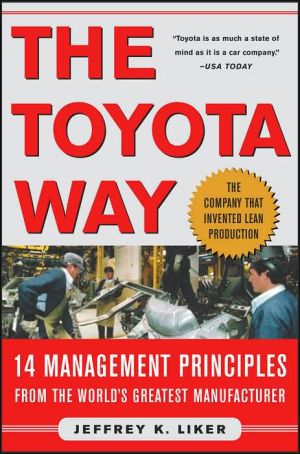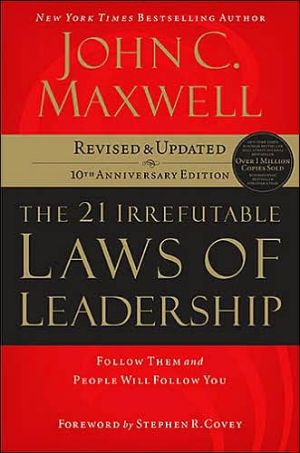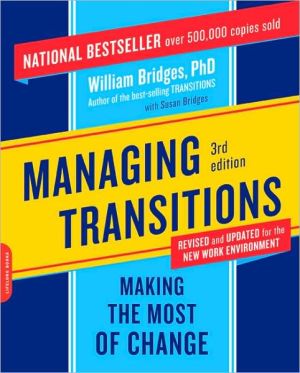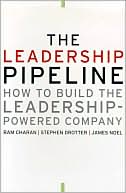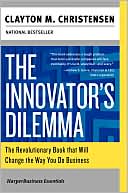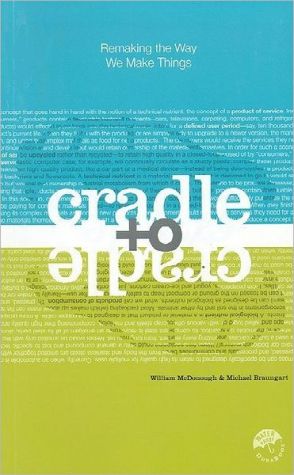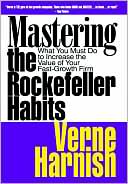The Toyota Way: Fourteen Management Principles from the World's Greatest Manufacturer
How to speed up business processes, improve quality, and cut costs in any industry\ In factories around the world, Toyota consistently makes the highest-quality cars with the fewest defects of any competing manufacturer, while using fewer man-hours, less on-hand inventory, and half the floor space of its competitors. The Toyota Way is the first book for a general audience that explains the management principles and business philosophy behind Toyota's worldwide reputation for quality and...
Search in google:
"This book will give you an understanding of what has made Toyota successful and some practical ideas that you can use to develop your own approach to business."—Gary Convis, Managing Office of ToyotaFewer man-hours. Less inventory. The highest quality cars with the fewest defects of any competing manufacturer. In factories around the globe, Toyota consistently raises the bar for manufacturing, product development, and process excellence. The result is an amazing business success story: steadily taking market share from price-cutting competitors, earning far more profit than any other automaker, and winning the praise of business leaders worldwide.The Toyota Way reveals the management principles behind Toyota's worldwide reputation for quality and reliability. Dr. Jeffrey Liker, a renowned authority on Toyota's Lean methods, explains how you can adopt these principles—known as the "Toyota Production System" or "Lean Production"—to improve the speed of your business processes, improve product and service quality, and cut costs, no matter what your industry.Drawing on his extensive research on Toyota, Dr. Liker shares his insights into the foundational principles at work in the Toyota culture. He explains how the Toyota Production System evolved as a new paradigm of manufacturing excellence, transforming businesses across industries. You'll learn how Toyota fosters employee involvement at all levels, discover the difference between traditional process improvement and Toyota's Lean improvement, and learn why companies often think they are Lean—but aren't.The fourteen management principles of the Toyota Way create the ideal environment for implementing Lean techniques and tools. Dr. Liker explains each key principle with detailed, examples from Toyota and other Lean companies on how to: Foster an atmosphere of continuous improvement and learning Create continuous process "flow" to unearth problems Satisfy customers (and eliminate waste at the same time) Grow your leaders rather than purchase them Get quality right the first time Grow together with your suppliers and partners for mutual benefit Dr. Liker shows the Toyota Way in action, then outlines how to apply the Toyota Way in your organization, with examples of how other companies have rebuilt their culture to create a Lean, learning enterprise. The Toyota Way is an inspiring guide to taking the steps necessary to emulate Toyota's remarkable success. What can your business learn from Toyota? How to double or triple the speed of any business process How to build quality into workplace systems How to eliminate the huge costs of hidden waste How to turn every employee into a quality control inspector How to dramatically improve your products and services! With a market capitalization greater than the value of General Motors, Ford, and Chrysler combined, Toyota is also, (by far), the world's most profitable automaker. Toyota's secret weapon is Lean production—the revolutionary approach to business processes that it invented in the 1950's and has spent decades perfecting. Today businesses around the world are implementing Toyota's radical system for speeding up processes, reducing waste, and improving quality.The Toyota Way, explain's Toyota's unique approach to Lean—the 14 management principles and philosophy that drive Toyota's quality and efficiency-obsessed culture. You'll gain valuable insights that can be applied to any organization and any business process, whether in services or manufacturing. Professor Jeffrey Liker has been studying Toyota for twenty years, and was given unprecedented access to Toyota executives, employees and factories, both in Japan and the United States, for this landmark work. The book is full of examples of the 14 fundamental principles at work in the Toyota culture, and how these principles create a culture of continuous learning and improvement. You'll discover how the right combination of long-term philosophy, process, people, and problem solving can transform your organization into a Lean, learning enterprise—the Toyota Way.Dr. Jeffrey K. Liker is a professor of industrial and operations engineering at the University of Michigan and cofounder and director of the Japan Technology Management Program at the University of Michigan. Soundview Executive Book Summaries Toyota is the world's most profitable automaker. Its "secret weapon" is lean production - the revolutionary approach to business processes that it invented in the 1950s and has spent decades perfecting. Today, businesses around the world are trying to emulate Toyota's remarkable success by working to implement the company's radical system for speeding up business and service processes, reducing waste, and improving quality. It is a system that is derived from balancing the role of people in an organizational culture that expects and values their continuous improvements, with a technical system that is focused on high-value-added "flow."To help other companies learn to continually improve on what they do, Professor of Industrial and Operations Engineering at the University of Michigan Dr. Jeffrey K. Liker describes the results of his year-long research into Toyota and its managers, executives, suppliers and training centers. While detailing the company's culture, processes and people, Liker provides readers with a management model that can be used to transform business across industries, and the key principles that drive the techniques and tools of the Toyota Production System and the management of Toyota in general. These principles embody the long-term philosophy, processes, results, people, partners and problem solving that drive the organizational learning at Toyota, and can make the Toyota Way work for any organization. Using Operational Excellence as a Strategic Weapon Toyota first caught the world's attention in the 1980s, when it became clear that there was something special about Japanese quality and efficiency. Japanese cars were lasting longer than American cars and required much less repair. By the 1990s, it was apparent that there was something even more special about Toyota compared to other automakers in Japan. It was the way Toyota engineered and manufactured the autos that led to unbelievable consistency in the process and product. Toyota designed autos faster, with more reliability, yet at a competitive cost, even when paying the relatively high wages of Japanese workers. Equally impressive was that every time Toyota showed an apparent weakness and seemed vulnerable to the competition, Toyota fixed the problem and came back even stronger. Today, Toyota is the third-largest auto manufacturer in the world, behind General Motors and Ford, with global vehicle sales of over 6 million per year in 170 countries. Auto industry analysts estimate that Toyota will pass Ford in global vehicles sold in 2005, and if current trends continue, it will eventually pass GM to become the largest automaker in the world. Quality Reputation Much of Toyota's success comes from its astounding quality reputation. In 2003, Toyota recalled 79 percent fewer vehicles in the United States than Ford and 92 percent fewer than Chrysler. According to a 2003 study in Consumer Reports, 15 of the top 38 most reliable models from any manufacturer over the last seven years were made by Toyota/Lexus. The Toyota Production System is Toyota's unique approach to manufacturing. It is the basis for much of the "lean production" movement that has dominated manufacturing trends for the last 10 years. Lean manufacturing is a five-part process that includes defining customer value, defining the value stream, making it "flow," "pulling" from the customer back, and striving for excellence. To be a lean manufacturer requires a way of thinking that focuses on making the product flow through value-adding processes without interruption (one-piece flow), a "pull" system that cascades back from customer demand by replenishing only what the next operation takes away at short intervals, and a culture in which everyone is striving continuously to improve.
Chapter 1\ The Toyota Way: Using Operational Excellence as a Strategic Weapon\ We place the highest value on actual implementation and taking action. There are many things one doesn't understand and therefore, we ask them why don't you just go ahead and take action; try to do something? You realize how little you know and you face your own failures and you simply can correct those failures and redo it again and at the second trial you realize another mistake or another thing you didn't like so you can redo it once again. So by constant improvement, or, should I say, the improvement based upon action, one can rise to the higher level of practice and knowledge. -Fujio Cho, President, Toyota Motor Corporation, 2002\ Toyota first caught the world's attention in the 1980s, when it became clear that there was something special about Japanese quality and efficiency. Japanese cars were lasting longer than American cars and required much less repair. And by the 1990s it became apparent that there was something even more special about Toyota compared to other automakers in Japan (Womack, Jones, and Roos, 1991). It was not eye-popping car designs or performance-though the ride was smooth and the designs often very refined. It was the way Toyota engineered and manufactured the autos that led to unbelievable consistency in the process and product. Toyota designed autos faster, with more reliability, yet at a competitive cost, even when paying the relatively high wages of Japanese workers. Equally impressive was that every time Toyota showed an apparent weakness and seemed vulnerable to the competition, Toyota miraculously fixed the problem and came back even stronger. Today Toyota is the third-largest auto manufacturer in the world, behind General Motors and Ford, with global vehicle sales of over six million per year in 170 countries. However, Toyota is far more profitable than any other auto manufacturer. Auto industry analysts estimate that Toyota will pass Ford in global vehicles sold in 2005, and if current trends continue, it will eventually pass GM to become the largest automaker in the world.\ Every automotive industry insider and many consumers are familiar with Toyota's dramatic business success and world-leading quality:\ \ Toyota's annual profit at the end of its fiscal year in March 2003, was $8.13 billion-larger than the combined earnings of GM, Chrysler, and Ford, and the biggest annual profit for any auto maker in at least a decade. Its net profit margin is 8.3 times higher than the industry average.\ While stock prices of the Big 3 were falling in 2003, Toyota's shares had increased 24% over 2002. Toyota's market capitalization (the total value of the company's stock) was $105 billion as of 2003-higher than the combined market capitalization of Ford, General Motors, and Chrysler. This is an amazing statistic. Its return on assets is 8 times higher than the industry average. The company has made a profit every year over the last 25 years and has $20-$30 billion in its cash war chest on a consistent basis.\ Toyota has for decades been the number one automaker in Japan and a distant fourth behind the "Big 3" automakers in North America. But in August of 2003, for the first time, Toyota sold more vehicles in North America than one of the "Big 3" automakers (Chrysler). It seems that Toyota could eventually become a permanent member of the "Big 3" U.S. automakers. (Of 1.8 million Toyota/Lexus vehicles sold in North America in 2002, 1.2 million were made in North America. Toyota is rapidly building new production capacity in the U.S., at a time when U.S. manufacturers are looking for opportunities to close plants, reduce capacity and move production abroad.)\ In 2003 the Toyota nameplate was on track to sell more vehicles in the U.S. than either of the two brandnames that have led U.S. sales for the past 100 years-Ford and Chevrolet. Camry was the top-selling U.S. passenger car in 2003 and five of the years prior. Corolla was the top selling small car in the world.\ Toyota not long ago was known for making small, basic transportation vehicles, yet in ten years leaped out to become the leader in luxury vehicles. Lexus was introduced in 1989 and in 2002 outsold BMW, Cadillac, and Mercedes-Benz in the U.S. for the third year in a row.\ Toyota invented "lean production" (also known as "the Toyota Production System" or "TPS"), which has triggered a global transformation in virtually every industry to Toyota's manufacturing and supply chain philosophy and methods over the last decade. The Toyota Production System is the foundation of dozens of books on "lean" including two bestsellers: The Machine That Changed the World: The Story of Lean Production (Womack, Jones, Roos, 1991) and Lean Thinking (Womack, Jones, 1996). Toyota employees are sought out by companies in almost every industry throughout the world for their expertise.\ Toyota has the fastest product development process in the world. New cars and trucks take 12 months or less to design, while competitors typically require two to three years.\ Toyota is benchmarked as the best in class by all of its peers and competitors throughout the world for high quality, high productivity, manufacturing speed, and flexibility. Toyota automobiles have consistently been at the top of quality rankings by J.D. Powers and Associates, Consumer Reports, and others for many years. Much of Toyota's success comes from its astounding quality reputation. Consumers know that they can count on their Toyota vehicle to work right the first time and keep on working, while most U.S. and European automotive companies produce vehicles that may work when new but almost certainly will spend time in the shop in a year or so. In 2003 Toyota recalled 79% fewer vehicles in the U.S. than Ford and 92% fewer than Chrysler. According to a 2003 study in Consumer Reports, one of the most widely read magazines for auto-buying customers, 15 of the top 38 most reliable models from any manufacturer over the last seven years were made by Toyota/Lexus. No other manufacturer comes close. GM, Mercedes, and BMW have no cars on this list. Not a single Toyota is on the dreaded "vehicles to avoid" list, while a handful of Fords, almost 50 percent of the GMs, and more than 50 percent of the Chryslers are to be avoided, according to Consumer Reports. Here are some other statistics from Consumer Reports' 2003 annual auto issue:\ In the small car category (Toyota Corolla, Ford Focus/Escort, GM Cavalier, and Chrysler Neon), Toyota won each of the last three years for overall reliability, as well as the prior three years, and predicted reliability for the 2003 model year.\ For family sedans, the Toyota Camry beat out the Ford Taurus, the GM Malibu, and Dodge Intrepid, winning in the last three years, the three prior years, and predicted reliability for the 2003 model year.\ More than half of all Toyota used cars are singled out as "recommended for purchase," compared with less than 10 percent of the Fords, 5 percent of the GMs, and none of the Chryslers.\ Toyota/Lexus has also dominated the J.D. Powers "initial quality" and long-term durability rankings for years. Toyota's Lexus was again the #1 most reliable car, according to the J.D. Powers 2003 quality survey, followed by Porsche, BMW, and Honda.\ \ What is the secret of Toyota's success? The incredible consistency of Toyota's performance is a direct result of operational excellence. Toyota has turned operational excellence into a strategic weapon. This operational excellence is based in part on tools and quality improvement methods made famous by Toyota in the manufacturing world, such as just-in-time, kaizen, one-piece flow, jidoka, and heijunka. These techniques helped spawn the "lean manufacturing" revolution. But tools and techniques are no secret weapon for transforming a business. Toyota's continued success at implementing these tools stems from a deeper business philosophy based on its understanding of people and human motivation. Its success is ultimately based on its ability to cultivate leadership, teams, and culture, to devise strategy, to build supplier relationships, and to maintain a learning organization.\ This book describes 14 principles which, based on my 20 years of studying the company, constitute the "Toyota Way." These 14 principles are also the foundation of the Toyota Production System (TPS) practiced at Toyota manufacturing plants around the world. For ease of understanding, I have divided the principles into four categories, all starting with "P"-Philosophy, Process, People/Partners, and Problem Solving (see Figure 1-1). (For an executive summary of the 14 principles of the Toyota Way, see chapter 4.)\ About the same time that I started writing this book, Toyota was unveiling its own internal "Toyota Way" document for training purposes. This document greatly influenced my thinking about the 14 principles and consequently I have incorporated the four high-level principles from that document (Genchi Genbutsu, Kaizen, Respect and Teamwork, and Challenge) and correlated them to my four principle categories of Philosophy, Process, People/Partners, and Problem Solving (see Figure 1-1). The Toyota Way and the Toyota Production System (Toyota's manufacturing method) are the double helix of Toyota's DNA; they define its management style and what is unique about the company. In this book I hope to explain and show how the Toyota model of success can be applied in any organization, to improve any business process, from sales to product development, marketing, logistics, and management. To assist you in this journey, I offer numerous examples of what Toyota does to maintain such a high level of achievement as well as explore companies from a variety of industries and service operations that have effectively applied Toyota's principles.\ The Toyota Production System (TPS) and Lean Production\ The Toyota Production System is Toyota's unique approach to manufacturing. It is the basis for much of the "lean production" movement that has dominated manufacturing trends (along with Six Sigma) for the last 10 years or so. Despite the huge influence of the lean movement, I hope to show in this book that most attempts to implement lean have been fairly superficial. The reason is that most companies have focused too heavily on tools such as 5S and just-in-time, without understanding lean as an entire system that must permeate an organization's culture. In most companies where lean is implemented, senior management is not involved in the day-to-day operations and continuous improvement that are part of lean. Toyota's approach is very different.\ What exactly is a lean enterprise? You could say it's the end result of applying the Toyota Production System to all areas of your business. In their excellent book, Lean Thinking, James Womack and Daniel Jones define lean manufacturing as a five-step process: defining customer value, defining the value stream, making it "flow," "pulling" from the customer back, and striving for excellence. To be a lean manufacturer requires a way of thinking that focuses on making the product flow through value-adding processes without interruption (one-piece flow), a "pull" system that cascades back from customer demand by replenishing only what the next operation takes away at short intervals, and a culture in which everyone is striving continuously to improve.\ Taiichi Ohno, founder of TPS, said it even more succinctly:\ All we are doing is looking at the time line from the moment the customer gives us an order to the point when we collect the cash. And we are reducing that time line by removing the non-value-added wastes. (Ohno, 1988)\ As we will see in more detail in Chapter 2, Toyota developed the Toyota Production System after World War II at a time when it faced very different business conditions than Ford and GM. While Ford and GM used mass production, economies of scale, and big equipment to produce as many parts as possible, as cheaply as possible, Toyota's market in post-war Japan was small. Toyota also had to make a variety of vehicles on the same assembly line to satisfy its customers. Thus, the key to their operations was flexibility. This helped Toyota make a critical discovery: when you make lead times short and focus on keeping production lines flexible, you actually get higher quality, better customer responsiveness, better productivity, and better utilization of equipment and space. While Ford's traditional mass production looks good when you measure the cost per piece on an individual machine, what customers want is a much greater variety of choices than traditional manufacturing can offer cost-effectively. Toyota's focus in the 1940s and '50s on eliminating wasted time and material from every step of the production process-from raw material to finished goods-was designed to address the same conditions most companies face today: the need for fast, flexible processes that give customers what they want, when they want it, at the highest quality and affordable cost. A focus on "flow" has continued to be a foundation for Toyota's success globally in the 21st century. Companies like Dell have also become famous for using short lead times, high inventory turns, and getting paid fast to rapidly develop a fast growing company. But even Dell is just beginning on the road to becoming the sophisticated "lean enterprise" that Toyota has developed through decades of learning and hard work.\ Unfortunately, most companies are still using the mass production techniques that worked so well for Henry Ford in the 1920s, when flexibility and customer choice were not important. The mass production focus on efficiency of individual processes goes back to Frederick Taylor and his "scientific management" at the beginning of the 20th century. Like the creators of the Toyota Production System, Taylor tried to eliminate waste from production processes. He observed workers and tried to eliminate every second of inefficient motion. Mass production thinkers have long understood that machine downtime is another obvious non-value-added waste-a machine shut down for repair is not making parts that could make money. But consider the following counter-intuitive truths about non-value-added waste within the philosophy of TPS.\ \ Often the best thing you can do is to idle a machine and stop producing parts. You do this to avoid over production, the fundamental waste in TPS.\ Often it is best to build up an inventory of finished goods in order to level out the production schedule, rather than produce according to the actual fluctuating demand of customer orders. Leveling out the schedule (heijunka) is a foundation for flow and pull systems and for minimizing inventory in the supply chain. (Leveling production means smoothing out the volume and mix of items produced so there is little variation in production from day to day.)\ Often it is best to selectively add and substitute overhead for direct labor. When waste is stripped away from your value-adding workers, you need to provide high-quality support for them as you would support a surgeon performing a critical operation.\ It may not be a top priority to keep your workers busy making parts as fast as possible. You should produce parts at the rate of customer demand. Working faster just for the sake of getting the most out of your workers is another form of over production and actually leads to employing more labor overall.\ It is best to selectively use information technology and often better to use manual processes even when automation is available and would seem to justify its cost in reducing your headcount. People are the most flexible resource you have. If you have not efficiently worked out the manual process, it will not be clear where you need automation to support the process.\ \ In other words, Toyota's solutions to particular problems often seem to add waste rather than eliminate it. The reason for these seemingly paradoxical solutions is that Ohno had learned from his experiences walking the shop floor a very particular meaning of non-valued-added waste: it had little to do with running labor and equipment as hard as possible, and everything to do with the manner in which raw material is transformed into a saleable commodity. For Ohno, the purpose of his journey through the shop floor was to identify activities that added value to raw material, and get rid of everything else. He learned to map the value stream of the raw material moving to a finished product that the customer was willing to pay for. This was a radically different approach from the mass production thinking of merely identifying, enumerating, and eliminating the wasted time and effort in the existing production processes.\ As you make Ohno's journey for yourself, and look at your own organization's processes, you will see materials, invoicing, service calls, and prototype parts in R&D (you fill in the blank for your business process) being transformed into something the customer wants. But on closer inspection, they are often being diverted into a pile, someplace where they sit and wait for long periods of time, until they can be moved to the next process or transformation. Certainly, people do not like to be diverted from their journeys and to wait on long lines. Ohno viewed material as having the same degree of impatience. Why? If any large batches of material are produced and then sit and wait to be processed, if service calls are backed up, if R&D is receiving prototype parts they don't have time to test, then this sitting and waiting to move to the next operation becomes waste. This results in both your internal and external customers becoming impatient. This is why TPS starts with the customer, by asking, "What value are we adding from the customer's perspective?" Because the only thing that adds value in any type of process- be it in manufacturing, marketing, or a development process-is the physical or information transformation of that product, service, or activity into something the customer wants.\ Why Companies Often Think They Are Lean-But Aren't\ When I first began learning about TPS, I was enamored of the power of one-piece flow. The more I learned about the benefits of flowing and pulling parts as they were needed, rather than pushing and creating inventory, the more I wanted to experience the transformation of mass production processes into lean processes first hand. I learned that all the supporting tools of lean such as quick equipment changeovers, standardized work, pull systems, and error proofing, were all essential to creating flow. But along the way, experienced leaders within Toyota kept telling me that these tools and techniques were not the key to TPS. Rather the power behind TPS is a company's management commitment to continuously invest in its people and promote a culture of continuous improvement. I nodded like I knew what they were talking about and continued to study how to calculate kanban quantities and set up one-piece flow cells. After studying Toyota for almost 20 years and observing the struggles companies have had applying lean manufacturing, what these Toyota teachers (called sensei) told me is finally sinking in. As this book attempts to show, the Toyota Way consists of far more than just a set of lean tools like "just-in-time."\ Let's say you bought a book on creating one-piece flow cells or perhaps went to a training class or maybe even hired a lean consultant. You pick a process and do a lean improvement project. A review of the process reveals lots of "muda" or "waste," Toyota's term for anything that takes time but does not add value for your customer. Your process is disorganized and the place is a mess. So you clean it up and straighten out the flow in the process. Everything starts to flow faster. You get better control over the process. Quality even goes up. This is exciting stuff so you keep doing it on other parts of the operation. What's so hard about this?\ I have visited hundreds of organizations that claim to be advanced practitioners of lean methods. They proudly show off their pet lean project. And they have done good work, no doubt. But having studied Toyota for twenty years it is clear to me that in comparison they are rank amateurs. It took Toyota decades of creating a lean culture to get to where they are and they still believe they are just learning to understand "the Toyota Way." What percent of companies outside of Toyota and their close knit group of suppliers get an A or even a B+ on lean? I cannot say precisely but it is far less than 1%.\ The problem is that companies have mistaken a particular set of lean tools for deep "lean thinking." Lean thinking based on the Toyota Way involves a far deeper and more pervasive cultural transformation than most companies can begin to imagine. Starting with a project or two to generate some enthusiasm is the right thing to do. The purpose of this book is to explain the Toyota culture and the principles it is based on.\ Here is one example of what I find disturbing in the lean movement in the U.S. The Toyota Supplier Support Center (TSSC) was established by Toyota in the U.S. to work with U.S. companies to teach them TPS. Its leader, Mr. Hajime Ohba, (a disciple of Taiichi Ohno who founded TPS) fashioned the center after a similar Toyota consulting organization in Japan. They have worked with many U.S. companies in different industries, in each case doing a "lean project" which consists of transforming one production line of a company using TPS tools and methods-typically in a 6-9 month period. Usually companies come to TSSC and apply for these services; however, in 1996 TSSC took the unusual step of approaching an industrial sensor manufacturing company that I will call "Lean Company X." It was strange that Toyota would offer to help this company because Lean Company X was already widely regarded as a best-practice example of lean manufacturing. It had become a common tour site for companies wishing to see world-class manufacturing in the U.S. Lean Company X even won the Shingo Prize for Manufacturing, an American-based award in honor of Shigeo Shingo, who contributed to the creation of the Toyota Production System. At the time they agreed to work with TSSC, the plant's world-class manufacturing work included:\ \ Established production cells\ Problem-solving groups of workers\ Company work time and incentives for worker problem solving\ A learning resource center for employees\ \ The Shingo Prize at the time was based largely on showing major improvements in key measures of productivity and quality. The reason TSSC wanted to work with Lean Company X was for mutual learning, because it was known as a best-practice example. TSSC agreed to take one product line in this "world-class" plant and use the methods of TPS to transform it. At the end of the nine-month project, the production line was barely recognizable compared with its original "world-class" state and had attained a level of "leanness" the plant could not have thought possible. This production line had leapfrogged the rest of the plant on all key performance measures, including:\ \ 46% reduction in lead-time to produce the product (from 12 to 6.5 hours)\ 83% reduction in work-in-process inventory (from 9 to 1.5 hours)\ 91% reduction in finished-goods inventory (from 30,500 to 2,890 units)\ 50% reduction in overtime (from 10 hours to 5 hours/person-week)\ 83% improvement in productivity (from 2.4 to 4.5 pieces/labor hour)\ \ When I lecture at companies on the Toyota Way, I describe this case and ask, "What does this tell you?" The answer is always the same: "There is always room for continuous improvement." But were these improvements small, incremental continuous improvements?" I ask. No. These were radical improvements. If you look at the original state of the production line at the beginning of the nine-month project, it is clear from the results that the company was in fact far from being world-class-12 days of lead-time to make a sensor, 9 hours of work-in-process, 10 hours overtime per person-week. The implications of this case (and cases I've seen even in 2003) are clear and disturbing:\ \ This "lean plant" was not even close to being lean based on Toyota's standards, despite being nationally recognized as a lean facility.\ The actual changes implemented by the company before TSSC showed up barely scratched the surface.\ Visitors were coming to the plant convinced they were seeing world-class manufacturing-suggesting they did not have a clue what world-class manufacturing is.\ The award examiners who chose to honor this plant in the name of Shigeo Shingo did not understand any more than the visitors what the Toyota Production System really is. (They have improved a great deal since then.)\ Companies are hopelessly behind Toyota in their understanding of TPS and lean.\ \ I have visited hundreds of companies and taught employees from over one thousand companies. I have compared notes with many of those I have taught. I have also visited a number of the U.S. plants that were fortunate to have received assistance from TSSC, which has consistently helped companies achieve a level of improvement like "Lean Company X." Unfortunately, I see a persistent trend in the inability of these companies to implement TPS and lean. Over time, the lean production line TSSC sets up degrades rather than improves. Little of what Toyota has taught ultimately is spread to other, less efficient production lines and other parts of the plant. There is a "lean production cell" here and a pull system there and the time it takes to changeover a press to a new product has been reduced, but that is where the resemblance to an actual Toyota lean model ends. What is going on?\ The U.S. has been exposed to TPS for at least two decades. The basic concepts and tools are not new. (TPS has been operating in some form in Toyota for well over 40 years.) The problem, I believe, is that U.S. companies have embraced lean tools but do not understand what makes them work together in a system. Typically management adopts a few of these technical tools and even struggles to go beyond the amateurish application of them to create a technical system. But they do not understand the power behind true TPS: the continuous improvement culture needed to sustain the principles of the Toyota Way. Within the 4P model I mentioned earlier, most companies are dabbling at one level-the "Process" level (see Figure 1-2). Without adopting the other 3Ps, they will do little more than dabble because the improvements they make will not have the heart and intelligence behind them to make them sustainable throughout the company. Their performance will continue to lag behind those companies that adopt a true culture of continuous improvement.\ The quote at the beginning of this chapter from Mr. Fujio Cho, President of Toyota, is not just rhetoric. From the executives "up to" the shop floor workers performing the value-added work, Toyota challenges people to use their initiative and creativity to experiment and learn. It is interesting that labor advocates and humanists for years have criticized assembly line work as being oppressive and menial labor, robbing workers of their mental faculties. Yet when Toyota sets up assembly lines, it selects only the best and brightest workers, and challenges them to grow in their jobs by constantly solving problems. Similarly, Toyota staffs sales, engineering, service parts, accounting, human resources, and every aspect of the business with carefully selected individuals and gives them the directive to improve their processes and find innovative ways to satisfy their customers. Toyota is a true learning organization that has been evolving and learning for most of a century. This investment in its employees should frighten those traditional mass production companies that merely focus on making parts and counting quarterly dollars while changing leaders and organizational structures every few years.\ Using the Toyota Way for Long-Term Success\ Critics often describe Toyota as a "boring company." This is the kind of boring I like. Top quality year in and year out. Steadily growing sales. Consistent profitability. Huge cash reserves. Of course, operational efficiency by itself can be dangerous. Think of the Swiss companies that were so efficient in making mechanical watches yet are now out of business. Along with operational efficiency you need to be constantly improving and innovating to stay ahead of the competition and avoid obsolescence. Given its track record, Toyota has accomplished this in spades. But despite Toyota's worldwide reputation as the best manufacturer in the world, no business book (in English) has explained for the general business reader the unique business principles and philosophy that has made the Toyota/Lexus brand synonymous with quality and reliability. The Toyota Way is the first book to introduce this thinking outside of Japan. It explains to the managers in any environment-blue-collar, white-collar, manufacturing, or service industry-how managers can dramatically improve their business processes by:\ \ Eliminating wasted time and resources\ Building quality into workplace systems\ Finding low-cost but reliable alternatives to expensive new technology\ Perfecting business processes\ Building a learning culture for continuous improvement\ \ The Toyota Way includes profiles of a diverse group of organizations that have had great success in using Toyota's principles to improve quality, efficiency, and speed. While many people feel it is difficult to apply Toyota's way of thinking outside of Japan, Toyota is in fact doing just that-building learning organizations in many countries throughout the world to teach the Toyota Way. In fact, I did much of the research for this book in the United States, where Toyota is on the way to building an autonomous branch of the company led and operated by Americans. This book is a blueprint of Toyota's management philosophy. It provides the specific tools and methods that can help you become the best in your industry on cost, quality, and service. The Toyota Way is a lesson, vision, and inspiration for any organization that wants to be successful in the long-term.
ForewordPrefaceAcknowledgmentsPt. 1The World-Class Power of the Toyota Way1Ch. 1The Toyota Way: Using Operational Excellence as a Strategic Weapon3Ch. 2How Toyota Became the World's Best Manufacturer: The Story of the Toyoda Family and the Toyota Production System15Ch. 3The Heart of the Toyota Production System: Eliminating Waste27Ch. 4The 14 Principles of the Toyota Way: An Executive Summary of the Culture Behind TPS35Ch. 5The Toyota Way in Action: The "No Compromises" Development of Lexus42Ch. 6The Toyota Way in Action: New Century, New Fuel, New Design Process - Prius51Pt. 2The Business Principles of the Toyota Way67Ch. 7Principle 1: Base Your Management Decisions on a Long-Term Philosophy, Even at the Expense of Short-Term Financial Goals71Ch. 8Principle 2: Create Continuous Process Flow to Bring Problems to the Surface87Ch. 9Principle 3: Use "Pull" Systems to Avoid Overproduction104Ch. 10Principle 4: Level Out the Workload (Heijunka)113Ch. 11Principle 5: Build a Culture of Stopping to Fix Problems, to Get Quality Right the First Time128Ch. 12Principle 6: Standardized Tasks Are the Foundation for Continuous Improvement and Employee Empowerment140Ch. 13Principle 7: Use Visual Control So No Problems Are Hidden149Ch. 14Principle 8: Use Only Reliable, Thoroughly Tested Technology That Serves Your People and Processes159Ch. 15Principle 9: Grow Leaders Who Thoroughly Understand the Work, Live the Philosophy, and Teach It to Others171Ch. 16Principle 10: Develop Exceptional People and Teams Who Follow Your Company's Philosophy184Ch. 17Principle 11: Respect Your Extended Network of Partners and Suppliers by Challenging Them and Helping Them Improve199Ch. 18Principle 12: Go and See for Yourself to Thoroughly Understand the Situation (Genchi Genbutsu)223Ch. 19Principle 13: Make Decisions Slowly by Consensus, Thoroughly Considering All Options; Implement Decisions Rapidly (Nemawashi)237Ch. 20Principle 14: Become a Learning Organization Through Relentless Reflection (Hansei) and Continuous Improvement (Kaizen)250Pt. 3Applying the Toyota Way in Your Organization267Ch. 21Using the Toyota Way to Transform Technical and Service Organizations269Ch. 22Build Your Own Lean Learning Enterprise, Borrowing from the Toyota Way289Bibliography/Chapter References311Recommended for Further Reading317Index319
\ Soundview Executive Book SummariesToyota is the world's most profitable automaker. Its "secret weapon" is lean production - the revolutionary approach to business processes that it invented in the 1950s and has spent decades perfecting. Today, businesses around the world are trying to emulate Toyota's remarkable success by working to implement the company's radical system for speeding up business and service processes, reducing waste, and improving quality. It is a system that is derived from balancing the role of people in an organizational culture that expects and values their continuous improvements, with a technical system that is focused on high-value-added "flow."\ To help other companies learn to continually improve on what they do, Professor of Industrial and Operations Engineering at the University of Michigan Dr. Jeffrey K. Liker describes the results of his year-long research into Toyota and its managers, executives, suppliers and training centers.\ While detailing the company's culture, processes and people, Liker provides readers with a management model that can be used to transform business across industries, and the key principles that drive the techniques and tools of the Toyota Production System and the management of Toyota in general. These principles embody the long-term philosophy, processes, results, people, partners and problem solving that drive the organizational learning at Toyota, and can make the Toyota Way work for any organization.\ Using Operational Excellence as a Strategic Weapon\ Toyota first caught the world's attention in the 1980s, when it became clear that there was something special about Japanese quality and efficiency. Japanese cars were lasting longer than American cars and required much less repair. By the 1990s, it was apparent that there was something even more special about Toyota compared to other automakers in Japan. It was the way Toyota engineered and manufactured the autos that led to unbelievable consistency in the process and product.\ Toyota designed autos faster, with more reliability, yet at a competitive cost, even when paying the relatively high wages of Japanese workers. Equally impressive was that every time Toyota showed an apparent weakness and seemed vulnerable to the competition, Toyota fixed the problem and came back even stronger.\ Today, Toyota is the third-largest auto manufacturer in the world, behind General Motors and Ford, with global vehicle sales of over 6 million per year in 170 countries. Auto industry analysts estimate that Toyota will pass Ford in global vehicles sold in 2005, and if current trends continue, it will eventually pass GM to become the largest automaker in the world.\ Quality Reputation\ Much of Toyota's success comes from its astounding quality reputation. In 2003, Toyota recalled 79 percent fewer vehicles in the United States than Ford and 92 percent fewer than Chrysler. According to a 2003 study in Consumer Reports, 15 of the top 38 most reliable models from any manufacturer over the last seven years were made by Toyota/Lexus.\ The Toyota Production System is Toyota's unique approach to manufacturing. It is the basis for much of the "lean production" movement that has dominated manufacturing trends for the last 10 years. Lean manufacturing is a five-part process that includes defining customer value, defining the value stream, making it "flow," "pulling" from the customer back, and striving for excellence. To be a lean manufacturer requires a way of thinking that focuses on making the product flow through value-adding processes without interruption (one-piece flow), a "pull" system that cascades back from customer demand by replenishing only what the next operation takes away at short intervals, and a culture in which everyone is striving continuously to improve.\ \ \
